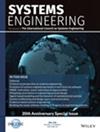改进自动驾驶汽车在不同传感器误差下的态势感知
IF 1.6
3区 工程技术
Q4 ENGINEERING, INDUSTRIAL
引用次数: 0
摘要
飞行员利用感官和训练来产生态势感知(SA)。然后,他们使用这种SA来做出合理的航空决策。相比之下,自动驾驶汽车在非常规情况下不能依赖驾驶员的专业知识。它们必须依靠机载传感器来构建环境SA。随着这些传感器的退化,假设存在一个点,在这个点上,这些传感器产生的SA不足以让自动驾驶汽车做出合理的航空决策。在以前的工作中,一个点是基于建模和仿真环境中的广泛假设来定义的(即,每个传感器内的误差是已知的,而不是随机的)。这项研究使用了更大的数据集,其中包含传感器中的随机误差。这些数据随后被用于在与之前工作相同的模拟环境中通过蒙特卡罗模拟建立预测方程。虽然数据显示,每个传感器的误差值与融合距离值之间存在统计学上显著的关系,但由此得出的预测方程无法提供足够的SA来做出合理的航空决策。这项研究强调了测试和评估社区在尝试开发用于验证和验证自主系统的新技术时将面临的多个问题。本文章由计算机程序翻译,如有差异,请以英文原文为准。
Refining autonomous vehicle situational awareness due to varying sensor error
Abstract Pilots use their senses and training to generate situational awareness (SA). They then use this SA to make sound aeronautical decisions. Autonomous vehicles, by contrast, cannot rely on pilot expertise in off‐nominal situations. They must rely on their onboard sensors to build SA of the environment. As these sensors degrade, it is hypothesized that a point exists where the SA generated by these sensors is inadequate to allow the autonomous vehicle to make sound aeronautical decisions. In previous work, a point was defined based on broad assumptions within a modeling and simulation environment (i.e., the error within each sensor was known and not random). This research used a larger data set that contained random errors within the sensors. The data was then used to build predictive equations through a Monte Carlo simulation in the same simulation environment as previous work. While the data showed there was a statistically significant relationship between the error values in each sensor and the fused distance value, the resulting predictive equations were not able to provide adequate SA to make sound aeronautical decisions. This research highlights multiple issues the test and evaluation community will face when trying to develop new techniques for the verification and validation of autonomous systems.
求助全文
通过发布文献求助,成功后即可免费获取论文全文。
去求助
来源期刊

Systems Engineering
工程技术-工程:工业
CiteScore
5.10
自引率
20.00%
发文量
0
审稿时长
6 months
期刊介绍:
Systems Engineering is a discipline whose responsibility it is to create and operate technologically enabled systems that satisfy stakeholder needs throughout their life cycle. Systems engineers reduce ambiguity by clearly defining stakeholder needs and customer requirements, they focus creativity by developing a system’s architecture and design and they manage the system’s complexity over time. Considerations taken into account by systems engineers include, among others, quality, cost and schedule, risk and opportunity under uncertainty, manufacturing and realization, performance and safety during operations, training and support, as well as disposal and recycling at the end of life. The journal welcomes original submissions in the field of Systems Engineering as defined above, but also encourages contributions that take an even broader perspective including the design and operation of systems-of-systems, the application of Systems Engineering to enterprises and complex socio-technical systems, the identification, selection and development of systems engineers as well as the evolution of systems and systems-of-systems over their entire lifecycle.
Systems Engineering integrates all the disciplines and specialty groups into a coordinated team effort forming a structured development process that proceeds from concept to realization to operation. Increasingly important topics in Systems Engineering include the role of executable languages and models of systems, the concurrent use of physical and virtual prototyping, as well as the deployment of agile processes. Systems Engineering considers both the business and the technical needs of all stakeholders with the goal of providing a quality product that meets the user needs. Systems Engineering may be applied not only to products and services in the private sector but also to public infrastructures and socio-technical systems whose precise boundaries are often challenging to define.
 求助内容:
求助内容: 应助结果提醒方式:
应助结果提醒方式:


